Faculty Projects

Analysis of Opsin Expression and Photoreceptor Cell Types in the Compound Eyes of Mosquitoes
Primary mentor: Michelle Whaley (Molecular Genetics)
Secondary Mentor: Malcolm Fraser (Virology)
Introduction: Members of the rhodopsin family of visual pigments are expressed in subsets of photoreceptor cells to tune the cell to colors of light. In this project we seek to understand the cellular architecture and opsin expression in the compound eye, with a focus on the mosquitoes Aedes aegypti and Anopheles gambiae. We have found very interesting expression patterns and cellular mechanisms that likely increase sensitivity to light at dusk and dawn when mosquitoes are most active. This involves the movement of opsin protein in and out of the light sensitive rhabdomere in photoreceptor cells. We are currently using Crispr/Cas9 technology to generate visual mutants to analyze the contributions of various opsins to mosquito behavior. Six papers from this work has been published in the last seven years and includes nine undergraduate co-authors, one was an REU fellow.Research Projects: Students will play a key role in two or more of the following projects based on their interests: 1. Gene cloning and gene expression work to allow mosquito visual pigments to be expressed and characterized in Drosophila melanogaster, 2. Crispr/Cas9 embryo injections and mosquito genetic crosses to characterize transgenic strains and place transgenes in required genetic backgrounds for various analyses, 3. Immunohistological examination of the retinal organization in mosquitoes, providing description of the cellular anatomy and mechanisms of opsin movement, 4. Other analyses, such as westerns blots, mass spectrometry, circadian rhythm studies, and mosquito behavior assays, to determine the cellular basis that allows mosquitoes to detect light in low light conditions.
What the Student Will Learn: The student will engage in hypothesis driven research that will investigate the differences in the development and organization of the mosquito retina in relationship to Drosophila. They will investigate how these adaptations benefit the behavior and life cycle strategies of mosquitoes. They will also learn genetic, molecular and cellular analysis, as well as the new genomic tools being developed in mosquitoes.
Broader Impact: The student can work on wildtype mosquito opsin gene expression in our lab, however mosquito mutants are not available. Dr. Fraser's lab is developing technology to create transgenic insects using the piggybac transposon. The student will also work in the Fraser lab and participate in the generation of transgenic mosquitoes that are visual mutants. Through our other collaborations, students will gain a strong appreciation for the biochemical, physiological, and behavioral assays that help us more fully understand the role of vision in the mosquito life cycle.

Investigation of basic cellular principles of neural cells during development and regeneration.
Primary mentor: Cody Smith (Neuroscience)
Secondary mentor: Scott Howard (Electrical Engineering)
Introduction: The nervous system is an integral network of connected pathways that control behavior, learning and survival. During development, individual cells precisely organize and assume specialized roles to ensure that the system can form and adapt appropriately in subsequent growth and learning. These cells include the neurons, which transmit the information throughout the body, and glial cells, which perform numerous maintenance and support roles. There is a significant gap in our understanding of how the precise organization of neurons and glial cells dynamically changes to impact the ability for humans and other animals to sense, react and learn. In part, this is because real-time visualization of neural ontogeny has been intractable in experimental models like the mouse, which develop within the womb. To tackle this, my lab employs a combination of cutting-edge microscopy and genetic methodologies in vivo with zebrafish, which are born outside the mother, to determine how distinct glial and neuronal cell types work in concert to build and organize nerves.Research Projects: Students will play a role in one or more of the following projects: 1. Identify genetic components that are important for critical neural development components. 2. Reveal molecules that function in regeneration of the nervous system or 3. Computational analysis of transcriptional profiles of cells in the nervous system.
What the Student Will Learn: Students will join a laboratory environment that will teach them fundamental experimental design. The students will learn the stepwise process of dissecting a basic molecular pathway. They will also learn critical skills to help them excel in the scientific workforce, including paper and figure preparation, critical dissection of primary literature and critical thinking.
Broader Impact: These projects provide a comprehensive training program that sharpens critical thinking skills and communication. Such expertise is important to identify a problem in the world, devise a solution for it and then present that to the community.
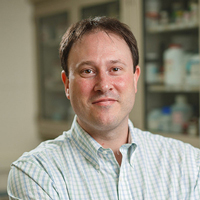
Rhythmic Programming of behavior and physiology in Anopheles gambiae mosquito
Primary Mentor: Giles Duffield (Physiology)
Second Mentor: Frank Collins (Genomics)
Introduction: The Circadian clock regulates 24-hour endogenous rhythms in gene expression, biochemistry, physiology and behavior. This molecular clock is based on a cell autonomous system comprised of transcriptional-translational feedback loops. The molecular basis for circadian rhythms has been investigated in model organisms such as the mouse and Drosophila, but little is known of circadian regulation in a disease vector species, such as the mosquito. The mosquito exhibits a wealth of circadian behavior, such as feeding and breeding activity, but almost nothing is know of how the circadian system in this insect family is comprised and how the core molecular clock components regulate downstream physiology and behavior. Light plays a major role in both synchronizing the circadian clock and in the shaping of daily rhythms in the natural environment.Research Projects: Projects will examine the circadian clock of Anopheles gambiae, a vector of the malaria parasite. We are interested in exploring three aspects of biological timing and modulation of behavior by light:
- To elucidate the circadian control of the transcriptome and proteome and to highlight pathways that interconnect with described rhythmic aspects of the species behavior and physiology. This will involve next generation sequencing, real-time RT-PCR and mass spectrometry-based targeted proteomics analyses of time-of-day collections from A. gambiae tissues, allowing for the determination of what genes/proteins are under circadian clock control.
- We are interesting in manipulating in the mosquito both the molecular circadian clock and aspects of overt behavior using light. We will subject mosquitoes to timed delivery of doses of light of different characteristics and examine gene and protein expression as well as aspects of behavior such as flight activity and biting preference.
- Explore how the processes of sensory systems (olfaction and vision), detoxification (including insecticide resistance) and blood feeding behavior are regulated over the 24-hour day.
Characterization of the circadian regulation of the mosquito transcriptome/proteome will allow us to better understand both insecticide resistance in this species, as well as generate improved understanding of temporal-gated behavior such as time of blood feeding. Furthermore, examination of A. gambiae sub-species at a genomic level that exhibit differences in their circadian behavior, physiological responses and resistance to insecticides, will be allow us to identify specific underlying molecular pathways that correlate with the variants observed in the overt rhythms.
What the Student Will Learn: The student will learn relationship between the activity of genes, their protein products, and the regulation of cellular, physiological and behavioral processes that are under circadian control. They will analyze genomic information and help develop assays that examine physiology and behavior. The student will be exposed to a variety of techniques including RNA sequencing, real-time quantitative RT-PCR analyses, proteomics, bioinformatics, behavioral and physiological assays. In addition the student will learn about the powerful system of RNAi and how it can be used to manipulate protein expression.
Broader Impact: Dr. Duffield brings experience in molecular biology as well as manipulation of the circadian timing system and aspects of animal behavior/physiology. The collaborations with Dr. Frank Collins will allow the student to place the work into a broader context of global health issues associated with A. gambiae, such as the transmission of the malaria parasite in Africa and the application of insecticides. The student will be able to make use of ‘Vectorbase’ genome and proteome database and the broader utilization of the research data.
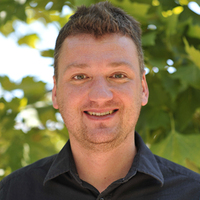
Novel Disease Mechanisms in Fragile-X syndrome.
Primary Mentor: Christopher Patzke (Neuroscience)
Secondary Mentors: Donny Hanjaya-Putra (Mechanical Engineering)
Introduction: 100 billion neurons, each with thousands of synapses, compose the complex framework of the human brain. Neurons wire and work together in specialized neural circuits that consist of cells interacting at synaptic connections in a patterned way to allow rapid processed information transfer. Intellectual disability (ID) affects about 2–3% of the general population and is often caused by mutations that developmentally impair synapses, neural cells and their circuits. Fragile-X Syndrome (FXS) is a major contributor to ID. It is well established that FXS is caused primarily by inactivation of the FMR1 expression due to expansions of CGG-sequences (usually more than 250 repeats in affected males) in the 5’ untranslated region (5’UTR) of the gene, leading to hypermethylation of the promoter.Research Projects: Students will use iPSC lines derived from different FXS-patients and CRISPR-corrected isogenic controls to differentiate human neurons and study phenotypical impairments. So far our preliminary results suggest an overproduction of synapses, impaired endocannabinoid signaling and aberrant synaptic vesicle pool size in synapses in FXS cultures.
What the Student Will Learn: Students will join a multidisciplinary laboratory that uses advanced cell culture techniques, high-end super-resolution light microscopy, and biochemical approaches. This environment is ideal to learn bench skills, design of experiments, critical thinking skills and manuscript writing, scientific presentation skills, and inspire and spark scientific interest in current neuroscience research.
Broader Impact: This project will lead to a deeper understanding of genetically caused ID and autism and facilitate therapeutic approaches.
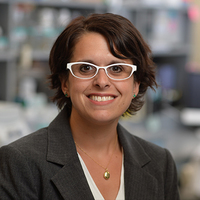
Identification of Novel Virulence Mechanisms in Pathogenic Mycobacteria
Primary Mentor: Patty Champion (Molecular Genetics)
Secondary Mentor: Matt Champion (Biochemistry and Analytical Chemistry)
Introduction: Mycobacterium tuberculosis is a bacteria that causes the human disease Tuberculosis. In the Champion lab, we are interested in using M. tuberculosis and other species of pathogenic mycobacteria to define how genes and the proteins they encode help promote disease. In particular we are interested in how mycobacteria transport proteins onto the bacterial cell surface and into the host macrophage. Our lab uses a combination of genetic and biochemical approaches, paired with mass spectrometry in collaboration with Dr. Matthew Champion to study mycobacteria.Research Projects: The student would be involved in generating genetic tools (gene knock out and complementation bacterial strains) to determine how specific genes affect protein transport and virulence. The student would work directly with graduate student and faculty mentors to decide which gene to target, and to create a project tailored to the interest of the student and the mentors. The resulting bacterial strains will be used to infect host cells and to generate protein fractions to study protein transport using western blot analysis and proteomics.
What the Student Will Learn: The student will be trained on a variety of microbial, genetic, and biochemical techniques including cloning, mycobacterial growth and transformation, cell fractionation, western blot analysis.
Broader Impact: Dr. P. Champion brings experience with bacterial genetics, molecular biology and protein transport. Dr. M. Champion brings expertise in biochemistry and analytical chemistry. The two mentors have been using proteomics and genetics to approach protein transport in mycobacteria for 11 years. The student will benefit from the multidisciplinary approach applied to mycobacterial pathogenesis, as well as participating in the creative process of project design.
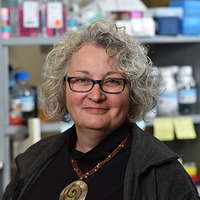
Population Genetics and Disease Ecology
Primary Mentor: Hope Hollocher (Molecular Evolution)
Secondary Mentor: Agustin Fuentes (Anthropology)
Introduction: In collaboration with Agustin Fuentes (Anthropology), we combine approaches in anthropology, landscape population genetics and disease ecology to investigate how genetic structuring of host populations influences the transmission and differentiation of parasites in non-human primates in Southeast Asia. We approach the problem by looking at the impact of different landscape feature (i.e. physical, social and anthropogenic) on the transmission dynamics of individual parasite species as well as the ecological drivers that influence parasite community structure overall. Our research has important implications for understanding how parasites move across complex environments as well as how changing land-use practices can influence bi-directional disease transmission between humans and non-human primates that live in close proximity.Research Projects: Students are an integral part of all aspects of the research enterprise in our laboratory and matched up with different projects depending on their particular interests. All projects expose students to an arsenal of genetic and computational tools, including next generation sequencing, used to assay variability across populations and to make inferences about population processes associated with parasite transmission.
What the Student Will Learn: Students will have the opportunity to learn a variety of molecular techniques (e.g. DNA extraction, DNA amplification, cloning, and next-generation sequencing) as well as population genetic analyses used to interpret these molecular data within the context of disease ecology. Depending on which aspect of the project is emphasized, students will also have the opportunity to gain experience in slide preparation, microscopy, and computer modeling and programming. Students are instructed on how to keep a laboratory notebook, troubleshoot, and design experiments to test specific hypotheses. Students are also encouraged to write-up their research and present their findings to a variety of different audiences, helping them to develop their communication skills on multiple levels.
Broader Impact: Students will broaden their perspectives about how evolution and population genetics can be used to answer questions of fundamental importance in understanding newly emerging infectious disease and human health. By embedding evolutionary genetics into a larger multidisciplinary framework, students will gain an appreciation of how different disciplines, each with its own unique perspective, can work together to tease apart inherent complexities that are not reducible through one approach alone.

Molecular Genetic Analysis of Zebrafish Retinal Development and Regeneration
Primary Mentor: David R. Hyde
Secondary Mentors: Cody Smith (developmental biology)
Andy Fischer (Ohio State University)
Seth Blackshaw (Johns Hopkins University School of Medicine)
Introduction: My lab studies the mechanisms involved in retinal development and regeneration in zebrafish. Eye development proceeds very quickly, with a functional eye (based on behavior and electrophysiology) present within 72 hours after fertilization of the egg. Because the embryo develops external to the mother and the embryo is translucent, it is relatively straightforward to follow many of the developmental events using non-invasive microscopy. The advanced state of the zebrafish genome project, the ability to reduce the expression of embryonic genes using morpholinos and CRISPR, and the panel of antibodies that my lab has generated, it is relatively straightforward to observe and perturb in precise ways the development of the functional eye. We extend this analysis to understand how the damaged adult zebrafish retina can specifically regenerate lost retinal neurons from a population of resident Muller glia cells. We determined that the Muller glial cells reprogram into a neural stem cell upon retinal damage and reenter the cell cycle to produce multipotent neuronal progenitor cells that can differentiate into any neuron in the retina. We identified a number of interesting genes and signaling pathways that are critical for different steps in the regeneration process. We also initiated a collaborative project to identify changes in gene expression and the epigenetic status of the Muller glia genomic DNA during retinal regeneration. Comparison of these datasets with similar datasets from the chick and mouse will reveal genes that are critical for zebrafish retinal regeneration and why mammals are unable to regenerate damaged retinal neurons.
Research Projects: Regardless of the project that the student selects, the student and I will devise experiments that incorporate molecular and genetic techniques to examine one or two genes or molecular events that paly a role in retinal development and/or regeneration. This analysis may include cloning a candidate gene or promoter, DNA sequencing, in situ hybridization to examine the expression pattern of the candidate gene, morpholinos to knock-down the expression of the candidate protein, CRISPR-mediated genomic manipulation, pharmacological manipulation of protein activity, and/or live-cell imaging of the developing or regenerating retina. The student will then use a combination of histology, immunohistochemistry, and molecular biology techniques to examine the effects of retinal development and/or regeneration that result from the loss of the candidate protein and compare it to the normal process. Thus, the student will gain an appreciation of the relationship between gene-protein-function-role in a biological process.
What the Student Will Learn: The student will be exposed to modern techniques in molecular genetics, including the generation and analysis of transgenic zebrafish, generation and analysis of transient mutants using morpholinos, CRISPR-mediated genomic manipulation, cloning of genes and analysis of their promoters, immunohistochemistry to examine cell-specific expression of proteins. They will be exposed to experimental design and the use of stringent controls, interpretation of data, and assembling the data into a presentation format (manuscripts or meeting posters). A comparison between the normal process (retinal development and regeneration) and a perturbed process (due to morpholino, CRISPR, pharmacological reagents) will allow the student to learn how to manipulate gene expression and protein activity in an organism and how cellular processes can be manipulated. The students will also have the opportunity to see how their molecular genetic analysis relates to the physiological and cell biological studies that are being performed by graduate students and postdocs in the lab.
Broader Impact: The students will gain a deep appreciation of how a cellular process (retinal development and regeneration) can occur in a multicellular organism and the variety of ways that process can be manipulated at the gene, transcription, translation, and protein activity level. Through our collaborations, the students will also gain a deeper understanding of how different species undergo a common process (retinal development) or differ in their response to damage/insult (complete retinal regeneration in zebrafish versus the inability to regenerate damaged retinas in mammals). Finally, the students will see how a variety of different techniques (genetics, molecular biology, cell biology, bioinformatics) can be incorporated into a single project and the importance of a multidisciplinary approach.
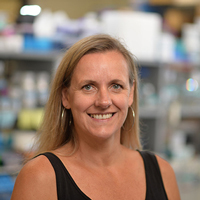
Infectious Disease and Vector Biology
Primary mentor: Mary Ann McDowell
Introduction: The overriding research focus in the McDowell laboratory is the biology of infectious diseases. Infections account for 16.2% of annual deaths worldwide, being responsible for 2 of 3 deaths in children under age 5. Successful control strategies to combat these devastating diseases must be multi-factorial, combining attacks on human infections and targeting diverse aspects of pathogen biology. This combinatorial approach provides the conceptual framework of the McDowell research program to investigate immunology, host cell-biology, pathogen diversity and insect vector biology, using both laboratory models and field-based studies. The group exploits Leishmania infection as a model to address fundamental immunological and cell biology questions. They study both murine and human systems utilizing a range of immunological, biochemical and genomics techniques, as well as, high throughput screening to identify novel compounds to inhibit Leishmania infection. In addition, the research program extends to address questions specific to the phlebotomine sand flies that transmit Leishmania and other insect vectors of human disease and to develop insecticides to control vector-borne diseases. One project evaluates the feasibility of using sand fly saliva as a vaccine component to combat leishmaniasis by assessing human immune responses to sand fly saliva and genetic variability of sand fly populations in the Middle East. Further, the laboratory coordinates an international effort to sequence the genome of two sand fly species. The McDowell research group also utilizes insect-vector genome data for the identification and screening of novel insecticide targets and further characterize the role these targets play in the biology of mosquitoes and sand flies.Research Projects: Students will have the opportunity to participate in one of five projects:
- Development of novel anti-Leishmania chemotherapeutics
- Development of novel insecticides and repellents
- Role of neuropeptide and biogenic amine receptors in mosquito behavior
- Regulation of microRNAs in human innate immune cells
- Role of pattern recognition receptors in phagosome maturation during Leishmania infection
What the Student Will Learn: Depending on the project students will learn a variety of immunological, molecular and cellular biological techniques. In addition, they will gain knowledge in mosquito behavior and integrative science.
Broader Impact: Students will an appreciation for how different scientific disciplines can collaborate for discovering innovative solutions for controlling infectious diseases. The laboratory collaborates with a variety of different scientists at Notre Dame, including Miguel Morales (Leishmania parasites), Zain Syed (Mosquito Olfaction and Behavior), Bruce Melancon (Medicinal Chemistry), Matt Champion (Proteomics), Scott Emrich (Bioinformatics), Neil Lobo (Vector Biology), and Tijana Milenkovic (Network Analysis).
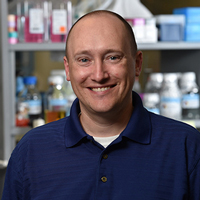
Design and evaluation of a peptide-based immunotoxin for breast cancer therapeutics
Primary Mentor: Zachary Schafer (cancer biology)
Secondary Mentor: Shaun Lee (microbiology)
Introduction: One of the biggest challenges facing cancer treatment is the development of resistance to chemotherapy. In order to combat this treatment barrier, various attempts at specialized, targeted therapies are emerging. Among them are the concepts of gene therapy and recruitment of the host immune system to fight against tumor formation and progression, although each approach is hampered with its own set of limitations. Importantly, many advancements are being made with small molecule inhibitors toward receptor tyrosine kinases that are often overexpressed in cancers, but the majority of current FDA-approved inhibitors are not targeted to a particular molecule, frequently resulting in strong side effects and premature drug resistance. Therefore, the development of more specific targeted therapies is of critical importance. One such therapeutic approach that has begun to garner interest is the development of immunotoxins. Immunotoxins are chimeric proteins containing a targeting moiety conjugated to a toxin component. The targeting moiety is frequently an antibody or recombinant antibody fragment, a design that has recently shown promise in treating blood cancers such as leukemia. We have begun to design and evaluate a novel peptide-based immunotoxin with specificity toward ErbB2. ErbB2 is a receptor tyrosine-protein kinase that is amplified in approximately 30% of breast cancers and is of strong interest in the development of targeted therapies.Research Projects: In order to address this question, a collaboration between my laboratory and the laboratory of Dr. Shaun Lee has been initiated. The Lee laboratory has significant experience in the study of bacterial toxins peptide antibiotics. More specifically, the Lee laboratory has been involved in the design and synthesis of peptide-based immunotoxins that target ErbB2. My laboratory’s strength is in basic cell biology, signal transduction, and the cellular and metabolic alterations that regulate cancer cell survival. Thus, the Lee lab will be responsible for designing and synthesizing candidate immunotoxins against ErbB2 while my laboratory will focus on assessing the efficacy of these immunotoxins in specifically eliminating ErbB2 positive breast cancer cells.
What the Student Will Learn: The student will learn a variety of cutting edge techniques in both my lab and in the Lee lab. Working in the Lee lab will expose students to techniques in molecular microbiology including bioengineering of novel immunotoxin peptides. Working in my lab will allow students to become familiar with a wide variety of cell biology techniques including fluorescence microscopy and in vitro analysis of cell death.
Broader Impact: By undertaking this project, the student will be working on answering a critical question in cancer biology that has far reaching therapeutic implications. In addition, the chance to work in both a microbiology lab and a cancer biology lab will expose the student to unique and complimentary approaches, methodology, and expertise and will give the student a much broader learning experience than could be obtained by working solely in my lab or the Lee lab.
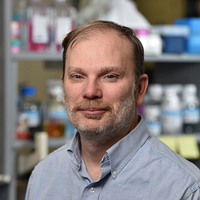
Evaluating specific RNA binding proteins as involved in transporting mycobacterial RNA into exosomes
Primary Mentor: Jeff Schorey
Secondary Mentor: Patty Champion
Introduction: Dr. Schorey has over 22 years of experience in studying mycobacterial pathogenesis; the last 16 serving as an independent researcher. His research has focused primarily on the interaction between mycobacteria and its host macrophage using mouse models. Recent studies have focused on the isolation and characterization of exosomes released from infected cells. Exosomes are small membrane vesicles released from most nucleated cells that function in intracellular communication. The laboratory studies were performed using isolated macrophages and dendritic cells as well using in vivo mouse infection models and have included various mycobacterial species: M. avium, M. smegmatis, M. tuberculosis and M. bovis. Dr. Schorey’s laboratory was the first to show that exosomes released from mycobacterial-infected macrophages can promote activation of the innate and acquired immune responses in vitro and in vivo. Some recent studies from Dr. Schorey’s laboratory made the exciting and unexpected discovery that M. tuberculosis (Mtb) RNA is packaged into exosomes released from infected macrophages.Research Projects: The goal of this project is to evaluate whether the cytosolic RNA-binding protein Heterogeneous Nuclear Ribonucleoprotein A2B1 (hnRNPA2B1), which has been shown to bind a specific subset of miRNAs through their EXOmotifs (GGAG), mediates loading of mycobacterial RNA into exosomes. HnRNPA2B1 was also found to bind HIV genomic RNA. Mex3, a co-receptor of endosomal TLR3, may also function in Mtb RNA trafficking, as TLR3 has been linked with a cellular response to Mtb infection, and Mex3 has been observed in human exosomes (http://www.exocarta.org/). To address the potential role of hnRNPA2B1 and Mex3 in Mtb RNA transport to exosomes, the student will use siRNA to knockdown their expression. Briefly, three independent siRNAs for each gene encoding hnRNPA2B1 and Mex3 will be synthesized and transfected into RAW264.7 cells using Lipofectamine 2000 (Invitrogen). Efficacy of the siRNAs will be determined by Western blot. Twenty-four hours after transfection, cells will be infected with H37Rv, and exosomes will be harvested 48 h post-infection. Exosomal RNA will be isolated using an Ambion RNA isolation kit (Life Technologies), and the presence or absence of Mtb transcripts will be determined by RT-PCR.
What the Student Will Learn: The student will be exposed to a variety of techniques including cell culture of mycobacteria and macrophages, infection experiments, cloning and transformations as well as various protein-based analysis; Western blots, proteomics, ELISAs, etc. In addition the student will learn about the powerful system of siRNA and how it can be used to manipulate protein expression.
Broader Impact: Dr. Schorey brings experience in M. tuberculosis virulence as well as manipulation of gene expression and exosome biology. Dr. Champion brings experience in various mycobacteria secretion systems. The student would certainly benefit from the related but distinct experience of the PIs.

Regulation of Kidney Regeneration in the Zebrafish
Primary Mentor: Rebecca A. Wingert (Developmental Biology)
Secondary Mentor: Yongtao Zhang (Applied and Computational Mathematics and Statistics)
Introduction: The kidney is composed of functional units known as nephrons, which are made of several specialized epithelial cell types that perform discrete roles in excretion and water balance. Recent studies have shown that damaged nephron cells in the adult kidney can be regenerated following injury from toxins or ischemia. Interestingly, several lines of evidence suggest that differentiated nephron epithelial cells fuel regeneration when they are induced to proliferate. However, there is a poor understanding of the cell and molecular changes involved in nephron regeneration and conflicting data about the possible role of adult kidney stem cells in this process. We are seeking to understand how kidney regeneration occurs and to identify the signaling pathways that can modulate kidney regeneration. We are utilizing an interdisciplinary approach to model kidney regeneration in vivo, and using mathematical modeling to gain novel insights into regeneration mechanics.Research Projects: Students will play a role in one or more of the following projects: 1. Gene expression analysis of kidney populations during regeneration; 2. Histological analysis of cellular changes during regeneration; 3. Real-time video microscopy of nephron regeneration; 4. Chemical genetic screening for small molecules that modulate cellular and/or gene expression changes during regeneration; 5. Mathematical analysis of regeneration events.
What the Student Will Learn: Students will participate in a vibrant laboratory community, learn experimental design, and hone their critical thinking skills by weekly participation in lab meetings and journal club discussions. At the bench, students will learn advanced cell biology and molecular biology techniques, as well as cutting edge microscopy. Students will have opportunities to implement statistical and mathematical modeling to better understand and make predictions about their data findings. They will also have opportunities for independent and collaborative experimentation throughout the summer, thus developing personal skills and working relationships with lab members.
Broader Impact: The horizon of scientific investigation is changing, moving toward increased emphasis on collaborative ventures that capitalize on diverse expertise to understand the many facets of how nature works. Students involved in kidney regeneration projects will experience the flavor of joining biological and mathematical approaches to understand how a vertebrate organ regenerates, and thus open their minds to the possibilities that can transpire when we harness diverse perspectives.

Surveillance for New Aquatic Invaders using Environmental DNA (eDNA)
Primary Mentor: Gary Lamberti (molecular aquatic ecology)
Secondary Mentor: Michael Pfrender (molecular evolutionary ecology)
Introduction: Environmental DNA (eDNA) is the genetic material that can be extracted from an organism’s environment rather than directly from the organism. Organisms leave a genetic “fingerprint” in the environment from shed cells and other released material. In aquatic environments, this fingerprint can be extracted from the water to reveal the identity of organisms currently or recently in that environment. Environmental DNA analysis is based on the detection of species-specific genetic marker sequences that consist of relatively short fragments of mitochondrial DNA (mtDNA) that typically span 80-250 bp. We study how such eDNA can be used as an early-warning system for potentially harmful aquatic invaders in the Great Lakes watershed, which has been fraught with undesired alien invaders for over a century. Our focus is on fish communities in Great Lakes coastal environments, where initial invasions often occur, but results are applicable to many other aquatic taxa and habitats. In our approach, we combine eDNA technology with comparative studies using traditional collection approaches for freshwater fishes. In the laboratory, we use a multidisciplinary approach that incorporates ecology, genetics, and bioinformatics to investigate how physical, chemical, and biological features of the environment shape the ability of eDNA to correctly and efficiently catalog the presence of novel species.Research Projects: REU students will be matched to specific eDNA projects depending on their interests. Two potential projects will involve (1) species-specific and (2) metabarcoding approaches to invasive fish detection. For species-specific detection where the identity of a limited number of potential invaders are known, students will engage in marker selection and primer design, sample collection, sample preparation, DNA extraction and amplification, and eDNA screening/detection calling. Standard PCR and qantitative PCR will be used to assay species-specific markers. In another project, students can engage in eDNA metabarcoding, which focuses on detecting the species richness of the entire assemblage or community of interest (e.g., all fishes in a wetland) using “universal PCR primers” targeting homologous genes from environmental samples and high-throughput sequencing (HTS). Following HTS, bioinformatics tools are used to assign each of the resulting DNA sequences to a taxon in a genetic bank.
What the Student Will Learn: These projects will expose students to modern genetic, ecological, and computational tools used to assay natural communities of organisms. Students will learn a variety of modern genetic techniques relevant to ecological investigations (e.g., DNA extraction, amplification, and sequencing) and will engage in bioinformatics analyses to interpret their data. They will also participate in field studies to collect organisms thereby linking lab studies to the natural world. Students will present periodic updates on their research at joint laboratory meetings and at a REU symposium at the end of the summer, thereby developing their communication skills in multiple venues. Students will also operate in a collaborative ‘team’ environment alongside graduate students, technicians, and postdoctorates from our own labs, and also from collaborating universities engaged in this and related projects.
Broader Impact: Ecological research is becoming increasingly more ‘molecular’ in its approach, and students will learn how molecular techniques can help to answer important and complex ecological questions. This project also has significant application to a serious environmental problem – namely the biological invasion of new habitats. For example, students will conduct surveillance for Asian carp, a much-feared invader currently on the doorstep of the Great Lakes. In addition, this project has direct implications for conservation biology in maintaining native biodiversity on a rapidly changing planet. This project also links ecological genetics to a larger multidisciplinary framework for understanding the dynamics of biological invasions, which can have great societal and environmental impacts.

Tumor: Host Interactions in Metastasis
Primary mentor: Sharon Stack
Secondary Mentors: Zac Schultz or Chia Chang depending on the project (Chemical and Biomolecular Engineer)
Introduction: The vast majority of cancer deaths result from metastatic disease, yet our understanding of the complex biological events required to successfully metastasize is limited. Our laboratory studies metastasis in two model systems: ovarian carcinoma (OvCa) and oral squamous cell carcinoma (OSCC). OvCa metastasizes using a unique mechanism and is relatively confined to the peritoneal cavity while OSCC metastasizes to lymph and bone. Our studies use an integrative approach combining in vitro biochemistry and cell biology with 3-dimensional organotypic and ex vivo cultures, in vivo murine models and human tissue specimens. We are a highly collaborative laboratory and work with a wide range of scientists in biochemistry, cell biology, animal imaging, pathology, engineering and physics.Research Projects: Current research projects with OvCa models are aimed at understanding early events in metastasis, namely how cells are shed from the primary tumor and how cell:matrix contact initiates changes in gene expression that drive metastatic progression. Mechanistic aspects of this project include analysis of adhesion receptor signaling, exosome-mediated communication, and regulation of extracellular proteolysis. Additional research in OvCa models are focused on the ‘host’ to address how host factors such as obesity and ageing alter metastatic success. In the OSCC models, our current research is focused mainly on oral tumors associated with the human papillomavirus (HPV). We have found that HPV-positive OSCC tumors induce host tissues to produce a distinctive microRNA signature that we are developing for diagnostic purposes. Determining how these microRNAs control protein translation and the resulting impact on tumor progression is another area of active research. Additionally we are interested in developing better screening tools to detect HPV-associated diseases in low-resource settings.
What the Student Will Learn: Initially the student will learn laboratory safety and protocols such as record keeping. In addition to laboratory skills that are project-dependent, the student will learn that good research requires patience, careful repetition, and more patience. The student will also be exposed to the scientific literature and will be introduced to scientific communication for both the more expert audience and the lay public.
Broader Impact: : The broader impact is that the student will learn that science requires teamwork, communication, and the ability to work with people that may be outside of their comfort zone. Our laboratory usually contains people of many races and nationalities, and is run very democratically. Therefore, as with all science, an open mind is necessary.

Elucidating the function of PDR-type ABC transporters in medically-important fungi
Primary mentor: Felipe Santiago-Tirado (cell biology)
Secondary Mentors: Ana Lidia Flores-Mireles (microbiology)
Introduction: The environmental yeast Cryptococcus neoformans is one of the most common causative agents of fungal infections yet there is an incomplete understanding of its pathogenesis. We have identified a gene, an ABC transporter of the PDR-type, that when deleted, the fungus is hypersensitive to antifungals and is defective in intracellular growth inside macrophages. Moreover, Cryptococcus has 10 of these transporters, and only 2 have been studied prior to our work. Interestingly, of these 10 transporters, 3 are atypical PDR genes (they are half-size when compared to most PDR genes) and they are highly expressed when the fungus is grown under host conditions, suggesting they might play a role in pathogenesis. PDR-type transporters are only found in plants and fungi, hence they represent a potential therapeutic target, yet they are understudied in fungal pathogens. Candida albicans also contains 1 of these atypical PDR genes that is uncharacterized.Research Projects: The student(s) will participate in several lines of research to address one or more of these questions: 1. What are the in vitro phenotypes when we delete these PDR genes? 2. Do these transporters interact with each other? 3. Are these transporters efflux pumps or channels?
What the Student Will Learn: Students will learn microbiological techniques applicable to both bacteria and yeast, as well as being exposed to tissue culture and animal studies.
Broader Impact: : The students will join a multidisciplinary laboratory environment where we use cell biology, biochemistry, genetics, and immunological methods to study the mechanisms of how fungal pathogens cause disease.

Monitoring The Dispersal Of Genetically Engineered Organisms
Primary mentor: Jennifer Tank
Secondary Mentors: Diogo Bolster, & Arial Shogren
Introduction: Understanding and monitoring the dispersal of genetically engineered (GE) organisms and their byproducts is a critical component of the safe and responsible use of transgenic technology in the environment. However, we currently lack the ability to rapidly and adequately track the movement of GE organisms in the environment. Our multidisciplinary team is working to address this critical challenge to increase our fundamental ability to detect, quantify, and model GE organisms and GE byproducts in the environment. Our approach combines advances in environmental, biological, and nanoscale technologies, along with a unique modeling approach, to monitor dispersal and transport of GE organisms.Research Projects: For this project, we will consider the GE fish, the AquaAdvantage salmon, which was recently (Nov 2015) approved for use by the FDA, which is an Atlantic salmon that has been modified to grow faster and year round, instead of only during spring and summer. Recently, concerns have been raised about the possible escape of the GE salmon and how that will affect native fish stocks, with studies demonstrating the ability of the GE salmon to outcompete wild fishes. Thus, there is a critical need for a predictive modeling framework to address if GE fishes are present in aquatic systems. To this end, we will apply “environmental DNA” (eDNA) techniques for the detection of AquaAdvantage salmon. The detection of eDNA in freshwater ecosystems is a pioneering technique developed at Notre Dame to combat the spread of targeted fish species; eDNA is a mixture of secreted cells, feces, mucus, and other tissues containing DNA that are found in the environment. Aquatic species are notoriously difficult to detect with manual capture methods; alternatively, traces of eDNA sloughed from an organism can remain in suspension and subsequently be collected in a water sample, revealing the presence of a target organism. One significant application of the eDNA approach is the early detection of species so that managers can prevent further spread and mitigate the damages associated with aquatic invasions, protecting the aquatic environment from significant degradation.
What the Student Will Learn: The student will gain fundamental knowledge of techniques used in stream ecology and hydrology, in addition to exposure to technological development for GE organism detection. The student will learn to communicate science in a multidisciplinary environment, a skill critical in a research world increasingly dominated by multiple realms of science.
Broader Impact: While eDNA is a critical and proven tool to document the presence/absence of aquatic species and illustrate species distributions, our knowledge of populations and biomass is also critical to the effective management of at-risk organisms or species. The eDNA approach for species surveillance has rapidly developed into a burgeoning field of research in molecular ecology and application in conservation and invasive species management, but our interdisciplinary research team is the first to apply eDNA to the detection and quantification of GE organisms.

ORGANIC BIOMARKER RECORDS OF PAST CLIMATES AND ENVIRONMENTS
Primary mentor: Melissa Berke
Introduction: Organic molecules are used as novel recorders of past climate and environmental conditions in lake and marine settings. These “chemical fossils,” or biomarkers as they are commonly called, can be preserved for millions of years and can be linked to specific source organisms or groups of organisms. Sediments often contain a diverse mixture of these compounds from organisms with no hard parts or otherwise poor fossilization, which can be used to answer wide-ranging questions about temperature shifts, pH, salinity, hydrologic variability, vegetation changes on the landscape, and biogeochemical cycling. This mixture of biomarkers in sediments can be separated and identified in the laboratory, and thus can serve as a useful tool for the examination of past climate and environmental conditionsResearch Projects: REU students will have choice of projects to work on based on interests. Two potential projects include:
- Ocean Current Influence on Monsoon Rainfall to East Africa: The International Ocean Discovery Program (IODP) Expedition 361 drilled six sites on the southeast African margin and in the Indian-Atlantic ocean gateway, southwest Indian Ocean. The sites, situated in the Mozambique Channel, were targeted to reconstruct the history of the greater Agulhas Current system over the past ~5 million years. Sediment samples from this expedition are at Notre Dame and are being extracted for biomarkers of ocean temperature, monsoon rainfall variability in East Africa, and the changes to vegetation this might have caused over long time scales. This study will examine the connection between important global ocean currents and climate and environmental conditions on land.
- Connection between Climate and Civilization during the Holocene: Another potential project in the lab will look at sedimentary biomarkers of human occupation (for example waste, animal husbandry, agriculture) and environmental shifts associated with human occupation and civilization collapse, with possible connections to regional and global climate.
Broader Impact: Climate change is a critical issue of our time. Studies of past climate help put current and future changes in context, framing the changes we see against the long time scales of variability recorded on Earth’s. The newer chemical methods of reconstructing past climate that REU students will use are transforming our understanding of how environments change with climate variability. Proxies for the climate of the past, where we can’t directly measure past conditions and must instead measure chemical remnants that change in response to past climate, rely on use of an interdisciplinary mixture of biology, chemistry, and geology.